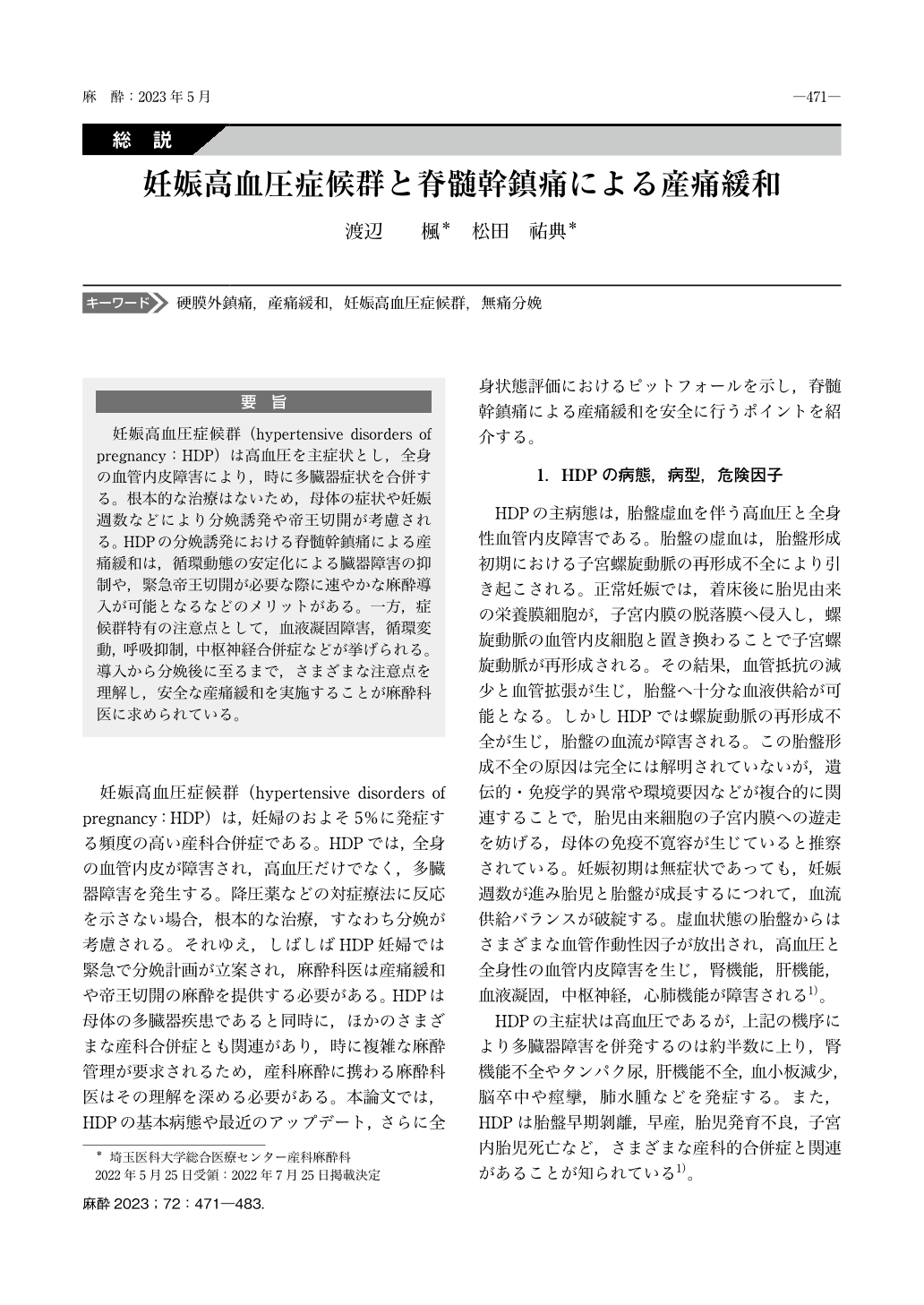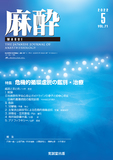Japanese
English
- 有料閲覧
- Abstract 文献概要
- 1ページ目 Look Inside
- 参考文献 Reference
要旨
妊娠高血圧症候群(hypertensive disorders of pregnancy:HDP)は高血圧を主症状とし,全身の血管内皮障害により,時に多臓器症状を合併する。根本的な治療はないため,母体の症状や妊娠週数などにより分娩誘発や帝王切開が考慮される。HDPの分娩誘発における脊髄幹鎮痛による産痛緩和は,循環動態の安定化による臓器障害の抑制や,緊急帝王切開が必要な際に速やかな麻酔導入が可能となるなどのメリットがある。一方,症候群特有の注意点として,血液凝固障害,循環変動,呼吸抑制,中枢神経合併症などが挙げられる。導入から分娩後に至るまで,さまざまな注意点を理解し,安全な産痛緩和を実施することが麻酔科医に求められている。
Hypertensive disorder during pregnancy(HDP)primarily presents as elevated blood pressure during pregnancy. Some patients develop widespread endothelial damage followed by multi organ disfunction. Since delivery of the infant and placenta remains the only definitive cure, induction of labor may be considered depending on the maternal symptoms, fetal condition, and gestational age. Neuraxial labor analgesia during induction of labor provides some advantages for patients with HDP, including better control of hypertension and thus possible reduction of endo-organ damage, and availability of rapid induction of epidural anesthesia for emergency cesarean delivery. However, anesthetic management requires special considerations for factors such as coagulation abnormality, hemodynamic instability, respiratory depression, and central nervous system complications. Anesthesiologists should understand these practical issues to provide safe analgesia throughout the perinatal period.

Copyright © 2023 KOKUSEIDO CO., LTD. All Rights Reserved.


